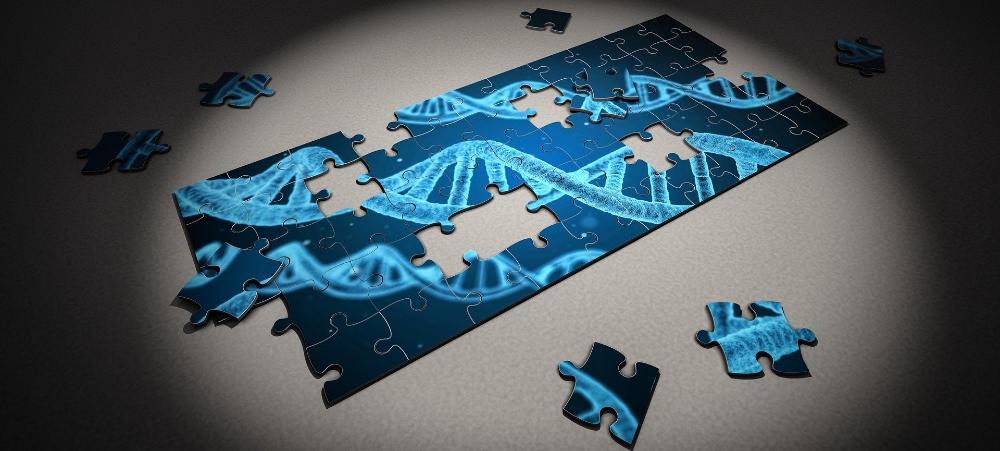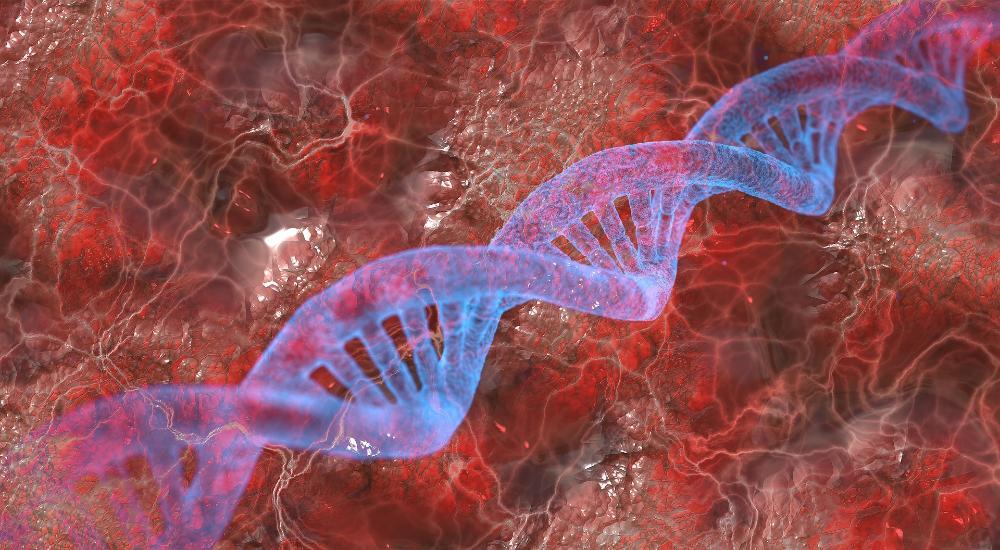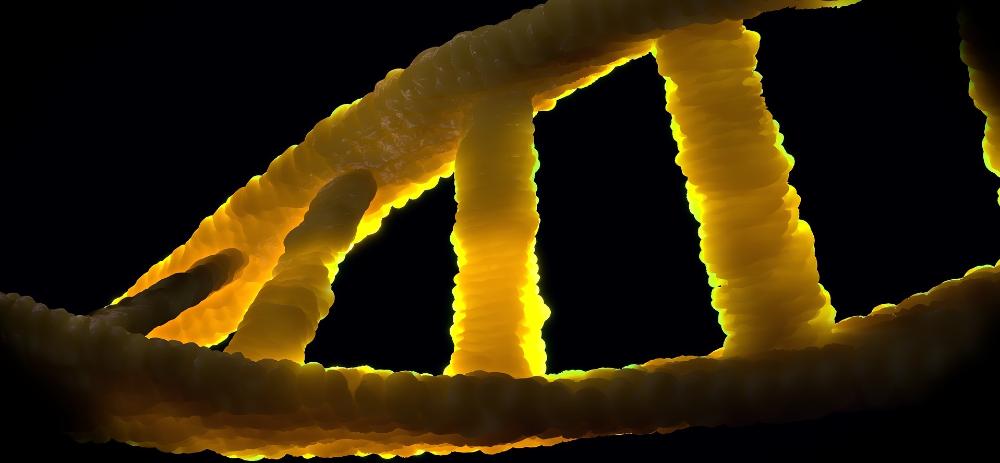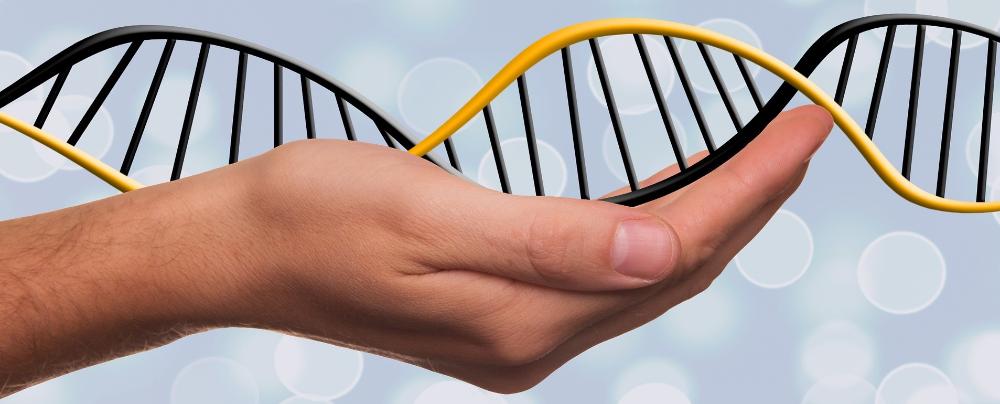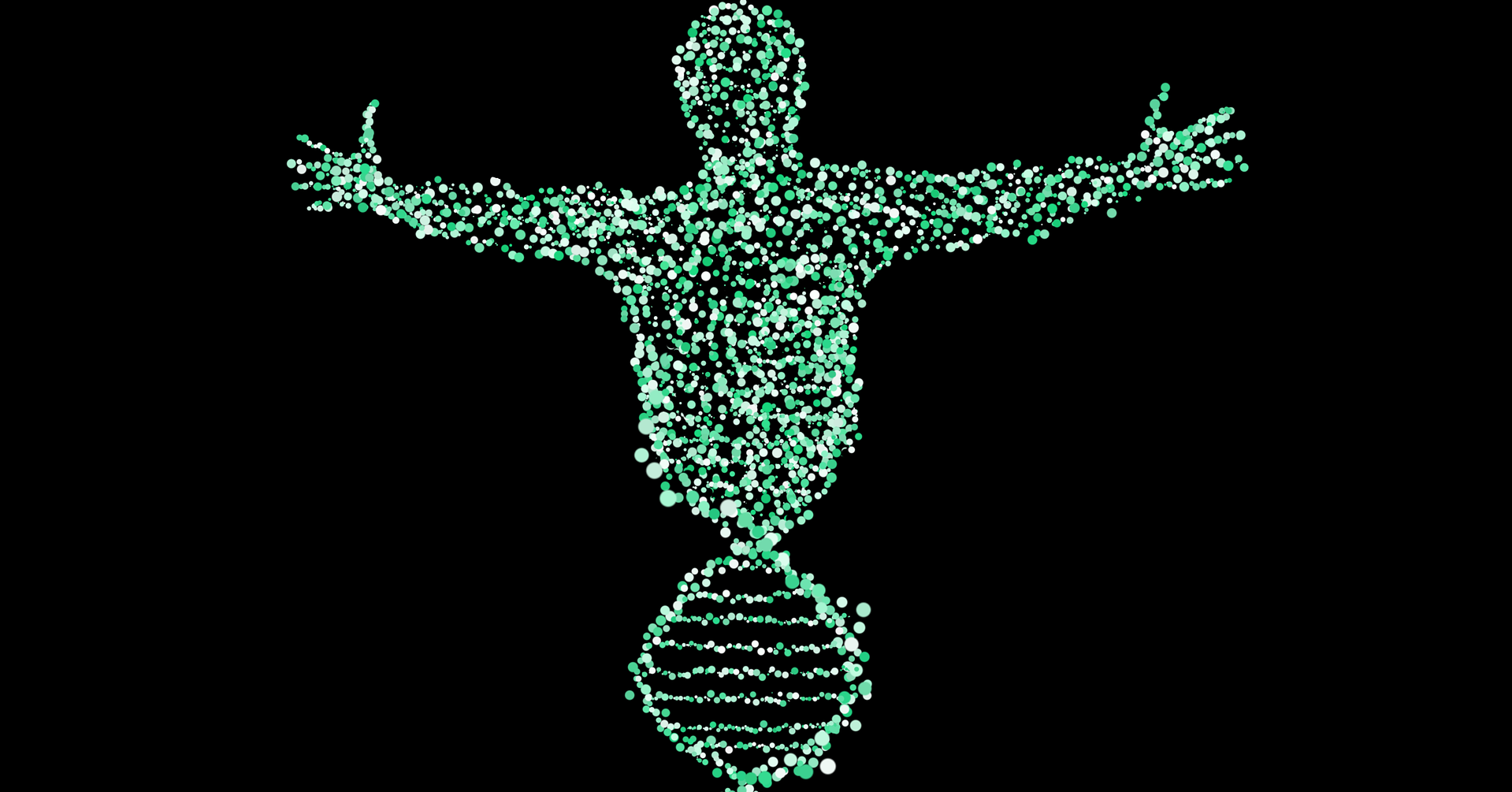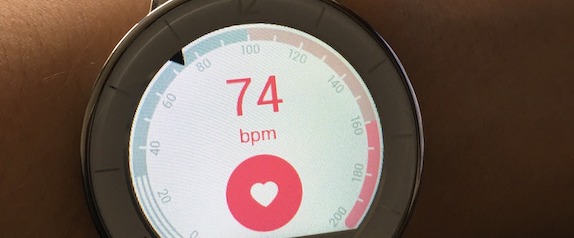CardioFit – CERG

CardioFit: Does poor aerobic fitness increase the risk of cardiovascular disease?
Which genes determine our risk of lifestyle diseases? Are these the same genes that affect our physical fitness? And is there a causal link between fitness and cardiovascular disease?

Background
Although the possibilites in genetic research have exploded in recent years, we still know relatively little about how genetics is connected to fitness level. As there is a strong connection between low maximum oxygen uptake and the risk of getting lifestyle diseases in the future, it is natural to think that poor fitness genes can affect the risk.
We have measured the fitness of several thousand people from Trøndelag county both during the third and fourth HUNT surveys. We have also collected genetic material from these participants, as well as tens of thousands of others who have participated in HUNT from the 1980s until today.
In the CardioFit project, we are trying to identify new genetic variants that are linked to physical fitness, and to study whether these genetic variants are important for the risk of cardiovascular disease later in life. We also want to use statistical methods to reveal whether low fitness in itself can actually cause cardiovascular disease.
COPING
How can genetic markers of aerobic capacity and resting heart rate help us better predict who is at high risk for cardiovascular disease?
CardioFit PhD
What other health conditions are linked to our fitness genes? And could overproduction of one fitness gene lead to better heart function?
Master's projects
Exercise, genetics and cardiovascular disease
Can exercise affect our genetic risk of cardiovascular disease?
Results from CardioFit
Here we summarize the published results from the CardioFit project as they are published. Those particularly interested can read the research articles in the scientific journals where they have been published.
- New fitness genes are linked to cardiovascular health
- Found several candidate genes for low and high fitness
- One single gene could affect fitness
- What do we really know about fitness genes and health?
- What do our fitness genes say about disease risk?
- Do genetics contribute to the health benefits in physically active?
- How does heart rate affect atrial fibrillation risk?
We have found six new genetic variants that link closely to having high or low cardiorespiratory fitness. Having a higher number of the favourable genetic variants – and a lower number of the bad ones – is linked to lower waist circumference, fat percentage, BMI and blood lipid levels. Furthermore, to have good fitness genes is associated with a lower likelihood of using blood pressure medication. We know that genes are quite important for maximum oxygen uptake, and this is the first major study to look for genetic variants associated with directly measured cardiorespiratory fitness.
In the study, we analyzed more than 120,000 unique genetic variants in 3470 healthy women and men who measured their maximum oxygen uptake during the HUNT3 Fitness study. We found that 41 of the genetic variants were closely related to the fitness of these participants, even after adjusting for gender, age and self-reported activity level. Six of the same genetic variants were also significantly associated with high fitness in the validation cohort of 718 elderly who participated in the Generation 100 study. Further experiments indicated that the genetic variants in question affect gene expression in adipose tissue, skeletal muscle and heart.
We have uncovered two new genetic variants that appear to be important for the VO2 max level in women. Based on our own fitness measurements of over 4,500 Norwegians, we found 38 genetic variants that were linked to high or low maximum oxygen uptake. When we looked at the same variants in blood samples from 60,000 fitness-tested Britons, we could confirm that two of them were decisive for the fitness level - at least in women.
The analysis is a so-called genome-wide association study, where we have examined the entire genetic material of participants in the HUNT3 Fitness study. Thus, we have been able to analyze 14 million genetic variants in these participants to see if they are linked to their fitness level. In the population as a whole, only two of these variants were significantly associated with fitness. However, when we analyzed women and men separately, we found 35 potential fitness genes in women and two in men.
Two of the gene variants that were important for VO2 max in Norwegian women were also significantly related to fitness in the British population. One of the genetic variant is located in a gene that is important for heart function and development of cardiovascular disease. Poor fitness is closely linked to an increased risk of lifestyle diseases, and part of the explanation can probably be found in our genes.
Most studies that have looked for fitness genes in the past have either not measured fitness with a maximum test on a treadmill with direct O2 measurements, or had few participants. Thus, this is the first large study that can use a sufficiently strict level of statistical certainty to uncover genes that are most likely directly linked to fitness. In addition, the study has revealed a number of candidate genes, which may have an impact on fitness but must be investigated further in other studies.
The gene COX7A2L appears to be an important gene for physical capacity. Among other things, the gene affects the formation of important protein complexes in the mitochondria, which are the power plants of our cells. In the long term, the findings could potentially lead to new forms of treatment for lifestyle diseases, for example by changing the properties of this fitness gene in people who have a less favorable variant.
In the study, we used data from the HUNT3 Fitness study to confirm that the COX7A2 gene may be important for maximum oxygen uptake in humans. People with a genetic variant that gives increased levels of the RNA strand COX7A2L in skeletal muscle have higher maximum oxygen uptake than those who do not have this genetic variant. In addition, the study reveals, using data from other population studies, that the same favorable genetic variant can not only provide increased fitness, but also reduce body fat and body weight.
The study, which is a collaboration between researchers in Switzerland, Finland, Spain and CERG, shows that the composition of the COX7A2L gene is decisive for how many stable RNA copies the gene produces, especially in skeletal muscle cells. Ten letters in a specific part of the gene turned out to be the most important, Muscle fibers that have the "correct" letter composition in both pairs of this gene get increased levels of the RNA strand COX7A2L when the muscle cells are exposed to metabolic stress, such as exercise.
The energy that enables our muscles to move is produced in the mitochondria of muscle cells. The vast majority of energy production is dependent on oxygen, and takes place in the form of cellular respiration in four protein complexes inside the mitochondria. The protein complexes cooperate with each other in so-called supercomplexes, and mitochondria with well-functioning supercomplexes can thus play a role for oxygen uptake. The study shows that the COX7A2L gene plays an important role for these supercomplexes: Muscle fibers with the favorable genetic variant, which gives increased COX7A2L levels, also have more supercomplexes and an increased potential for cellular respiration in the mitochondria.
Finally, the study tested the effect of the fitness gene in a species of mice who are normally born without the Cox7a21 gene. Mice from the same species that were nevertheless bred to have this gene, had both increased maximum oxygen uptake, more muscle mass and increased energy consumption during physical activity. Furthermore, the results showed that exercise led to increased RNA levels of Cox7a2l in these mice, and that the exercise also produced more potent supercomplexes in the mitochondria.
Our genes likely determine about half of our maximum oxygen uptake. Our genes also play a significant role in how physically active we are and how our bodies respond to exercise. However, even though we know that genetics are important, we still lack knowledge about which genes affect fitness, activity levels, and training response.
Our researchers have now summarized knowledge from the best and latest studies on genes related to maximum oxygen uptake, physical activity level, and exercise response. CERG have conducted the largest study to date looking for genetic variants associated with directly measured maximum oxygen uptake. We found several individual genes related to fitness, especially in women. Some larger studies have also identified genetic variants that appear to be related to physical activity level measured by activity monitors. However, research has not yet been able to uncover a single gene that can be confidently linked to training response.
The main challenge with these types of studies is that a large number of participants are needed to establish reliable relationships. Since so few fitness and activity genes have been identified so far, we currently know very little about the potential biological mechanisms that could explain why these genes have an impact. This is something our group wants to investigate further in upcoming studies.
We also want to know more about whether fitness and activity genes are also related to other risk factors for heart disease. There are studies suggesting that good fitness may be particularly important for people who have a high genetic risk of developing heart disease. We also assume that exercise and fitness affect the risk of lifestyle diseases by changing the behavior of our genes, known as epigenetics. However, more research is needed before we can provide reliable answers.
Genes that are linked to high fitness can also be linked to other things that affect our health. For example, our findings suggest that fitness genes also have an effect on the levels of creatinine in the blood and the risk of developing type 1 diabetes. We also found less certain signs that good fitness genes can lead to lower BMI, healthier levels of HDL cholesterol and lower resting heart rate.
We previously published the world's largest analysis of gene variants associated with directly measured fitness. In the new study, we investigated whether the 22 gene variants that were most closely linked to maximum oxygen uptake in that study are also linked to other measures of health. 65,000 participants from the second and third round of the Nord-Trøndelag Health Study have contributed data to the analyses. In addition to data from the health survey itself, we have also obtained information about hospital-registered diagnoses for the same people between 1999 and 2017.
Three of the gene variants that are linked to good fitness could also be linked to increased levels of creatinine in the blood. Increased levels of creatinine are associated with increased muscle mass. We can speculate that these three gene variants have an effect on muscle mass and in that way both give increased levels of creatinine and higher VO2 max. We checked the findings by doing the same analyses in a large British database, and found that two of the same gene variants were linked to increased creatinine levels. The analyzes from HUNT further indicate that a gene variant that increases fitness can significantly increase the risk of type 1 diabetes with neurological manifestations.
When we examined 33 gene variants that are only associated with fitness in men, we found that four of them are also linked to a significantly increased risk of endocarditis, an inflammatory disease of the inside of the heart. It is not unusual for genes linked to good health in one area to be bad for health in one or more other areas. For women, we found no reliable relationships between 44 gene variants and other health variables.
Although we did not find many reliable connections, we did make several interesting findings that have lower statistical power. Among other things, we saw signs that some of the genes that can give high fitness can also give a lower BMI for both sexes and healthier levels of HDL cholesterol and a lower resting heart rate for women.
Genes that increase the likelihood to be physically active are also linked to a healthier health profile. Specifically, we found that the risks of stroke, high blood pressure and type 2 diabetes are lower the better activity genes you have. In addition, we linked better activity genes to healthier waist circumference, BMI and HDL cholesterol. Among other things, the analyzes were adjusted for self-reported level of physical activity among the study participants. Thus, the results may indicate that some of the health benefits in physically active people are genetic - and not caused by the physical activity itself. Nevertheless, the effect sizes were low for all the associations, and it is uncertain if the findings have any clinical significance. Further, we found no correlation between having good activity genes and directly measured cardiorespiratory fitness levels.
The study, which has been carried out in collaboration with Finnish researchers, uses data on genes, physical activity and risk factors from nearly 50,000 people who participated in the Nord-Trøndelag Helath Study (HUNT) between 2006 and 2008. All participants were given an overall score based on a number of gene variants that have previously been shown to be important for physical activity levels. We then investigated how this score relates to a number of health variables today and the risk of developing disease up to ten years in the future. There is some uncertainty linked to the findings, partly because the genetic activity score did not explain particularly much of the actual physical activity level of the participants in HUNT.
The lower the resting heart rate one is genetically predisposed to have, the higher is the risk of getting atrial fibrillation. Low genetic resting heart rate is inherited randomly and thus not influenced by lifestyle and environmental factors that can change the resting heart rate. Thus, we can say with considerable certainty that it is a low resting heart rate in itself that increases the risk of future atrial fibrillation.
Previous studies have confirmed 46 genetic variants that are linked to a low resting heart rate, and these were the starting point for our analyses. In the study, we have examined genes and other health data in almost 70,000 women and men who participated in the Nord-Trøndelag Health Study between 1995 and 2008. We have also carried out the same investigations with data from the UK Biobank, where over 430,000 Britons contributed between 2006 and 2010.
By 2016, around 7,000 people from Trondheim had been confirmed to have atrial fibrillation, while more than 20,000 Britons had atrial fibrillation by 2021. Those who were genetically predisposed to the lowest resting heart rate had the highest risk. For each beat higher resting heart rate, the risk decreased by 4–5%. Very few people were genetically predisposed to a higher resting heart rate than 90, so we cannot say whether the risk of atrial fibrillation continues to decrease even with resting pulse values above 90.
Although a high resting heart rate in itself seems to protect against atrial fibrillation, it is not those with the highest resting heart rate in the population who have the lowest risk of getting atrial fibrillation. Both resting heart rate and risk of atrial fibrillation are affected by how we live, for example via blood pressure, BMI, smoking habits and level of physical activity. If one studies the link between resting heart rate and atrial fibrillation without taking these factors into account, it is those who have a resting heart rate between 60 and 80 - measured while sitting during the day - who have the lowest probability of getting atrial fibrillation.
List of scientific publications from CardioFit
2024:
Nordeidet, A. N., Klevjer, M., Øvretveit, K., Madssen, E., Wisløff, U., Brumpton, B. M., & Bye, A. Sex-specific and polygenic effects underlying resting heart rate and associated risk of cardiovascular disease. European Journal of Preventive Cardiology.
2023:
Klevjer, M., Rasheed, H., Romundstad, P. R., Madssen, E., Brumpton, B. M., & Bye, A. (2023). Insight into the relationship between resting heart rate and atrial fibrillation: A Mendelian Randomization study. Europace, 25(10), euad292.
Tynkkynen, N. P., Törmäkangas, T., Palviainen, T., Hyvärinen, M., Klevjer, M., Joensuu, L., Kaprio, J., Bye, Anja & Sillanpää, E. (2023). Associations of polygenic inheritance of physical activity with aerobic fitness, cardiometabolic risk factors and diseases: the HUNT Study. European Journal of Epidemiology, 1-14.
Nordeidet, A. N., Klevjer, M., Wisløff, U., Langaas, M., & Bye, A. (2023) Exploring shared genetics between maximal oxygen uptake and disease: the HUNT study. Physiological Genomics
Klevjer, M., Nordeidet, A. N., & Bye, A. (2023). The genetic basis of exercise and cardiorespiratory fitness–Relation to cardiovascular disease. Current Opinion in Physiology, 100649.
2022:
Benegiamo, G., Bou Sleiman, M., Wohlwend, M., Rodríguez-López, S., Goeminne, L. J., Laurila, P. P., Kleiver, M., Salonen, M. K., Lahti, J., Jha, P., Cogliati, S., Enriquez, J. A., Brumpton, B. M., Bye, A., Eriksson, J. G.,& Auwerx, J. (2022). COX7A2L genetic variants determine cardiorespiratory fitness in mice and human. Nature Metabolism, 1-16.
Klevjer, M., Nordeidet, A. N., Hansen, A. F., Madssen, E., Wisløff, U., Brumpton, B. M., & Bye, A. Genome-wide Association Study Identifies New Genetic Determinants of Cardiorespiratory Fitness: The HUNT Study. Medicine and science in sports and exercise.
2020:
Halle, K. K., Bakke, Ø., Djurovic, S., Bye, A., Ryeng, E., Wisløff, U., Andreassen, O. A., & Langaas, M. (2020): Computationally efficient familywise error rate control in genome‐wide association studies using score tests for generalized linear models. Scandinavian Journal of Statistics
Bye, A., Klevjer, M., Ryeng, E., Silva, G. J., Moreira, J. B. N., Stensvold, D., & Wisløff, U. (2020). Identification of novel genetic variants associated with cardiorespiratory fitness. Progress in Cardiovascular Diseases.
2018:
Bjørnland, T., Bye, A., Ryeng, E., Wisløff, U., & Langaas, M. (2018). Powerful extreme phenotype sampling designs and score tests for genetic association studies. Statistics in medicine.
Send us an e-mail:
cerg-post@mh.ntnu.no
Send us regular mail:
NTNU, Fakultet for medisin og helsevitenskap
Institutt for sirkulasjon og bildediagnostikk
Postboks 8905
7491 Trondheim
Visit us:
St. Olavs Hospital
Prinsesse Kristinas gt. 3
Akutten og Hjerte-lunge-senteret, 3. etg.
7006 Trondheim


